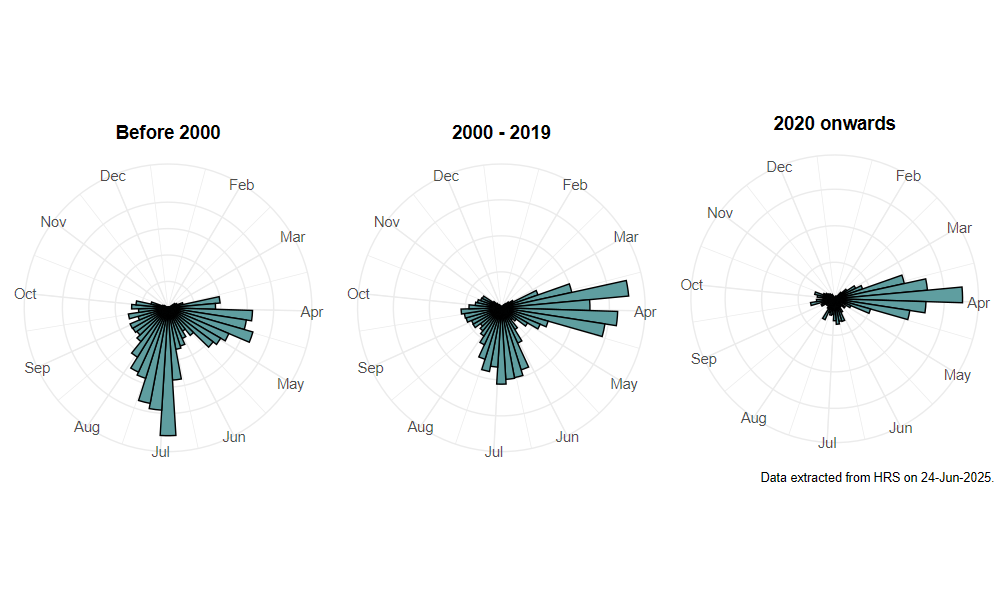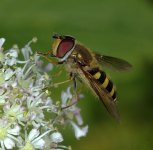Syrphus torvus Osten Sacken, 1875
Identification
Identification difficulty = 3. ![]()
![]() according to Ball & Morris, 20241
according to Ball & Morris, 20241
Biology
The larva feeds on a wide range of ground layer and arboreal aphids. Adults visit a wide range of flowers and often found around trees, typically along woodland edge and hedgerows, as well as in orchards and mature gardens. Like S. ribesii, it is multiple-brooded and has a long season, but it tends to show marked, and quite brief peaks of abundance in the spring and again in mid-summer.
Flight period
The following plots show the number of unique records per week excluding those reported to be of immature stages.

Distribution
This hoverfly (especially the female) is probably overlooked amongst other Syrphus species. There has been a tendency to think of it as a southern species, but recent records suggest that it is also common in Scotland.

Trends
The following plots show the Frescalo TFactor vs year and a map of the rescaled frequency (all records) for the species.
-
Ball, S., & Morris, R. (2024). Hoverflies of Britain and Ireland. WILDGuides (3rd ed.). Oxford: Princeton University Press. ↩
